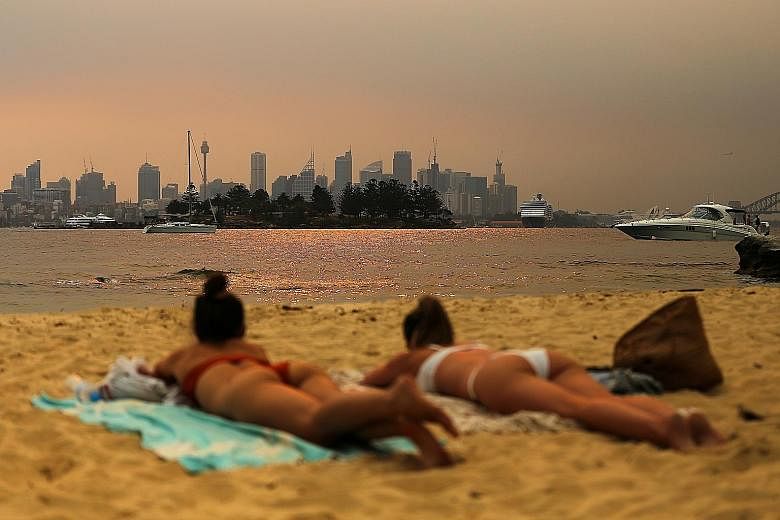WASHINGTON • Half of the world's sandy beaches may be wiped away by the end of the century by rising sea levels and other climate change effects, with Australia, Canada, Chile, Mexico, China and the United States among the hardest hit, researchers have said.
Many beaches that attract frolicking vacationers may be turned into rocky remnants as rising seas, changing weather patterns and other factors erode sandy shorelines that now account for more than a third of global coasts, they added on Monday.
A large proportion of shoreline in densely populated areas is projected to be lost.
"Touristic areas which have sandy beaches as their main selling point will probably face strong consequences," said coastal oceanographer Michalis Vousdoukas of the European Commission's Joint Research Centre in Ispra, Italy, lead author of the study published in the journal Nature Climate Change.
Aside from economic value, sandy shorelines play a vital environmental role.
"Sandy beaches are important habitats supporting a wide range of species. They also protect the coast from the effects of storms, so without sandy beaches, other inland environments can be affected by the effects of waves and saltwater intrusion," Dr Vousdoukas added.
A rise in global sea levels has accelerated in recent decades, with the major causes seen as thermal expansion - water expands as it warms - and the melting of land-based ice such as glaciers and ice sheets.
The researchers analysed satellite images showing shoreline changes in the past three decades and applied these trends to two climate change scenarios - one envisioning a moderate mitigation of greenhouse gas emissions linked to climate change, and the other envisioning high emissions.
By 2050, it is projected that 13.6 per cent to 15.2 per cent of global beaches would be lost, amounting to 36,097km to 40,511km of sandy shorelines.
By 2100, the researchers projected losses of 35.7 per cent to 49.5 per cent of beaches spanning 95,061km to 131,745 km.
Australia would lose more sandy shoreline than any other country, with up to 14,849km - about half its current total sandy coastline - projected to be gone by 2100.
Canada ranks second in projected losses (up to 14,425km). It is followed by Chile (up to 6,659km), Mexico (up to 5,488km), China (up to 5,440km), the US (up to 5,530km), Russia (up to 4,762km) and Argentina (up to 3,739 km).
Experts not involved in the new findings said they should sound an alarm. "The study's linkage of global coastal degradation to (fossil fuel) combustion is a landmark advance," said Dr Jeffrey Kargel, a senior scientist at the Planetary Research Institute in Tucson, Arizona.
REUTERS, AGENCE FRANCE-PRESSE

